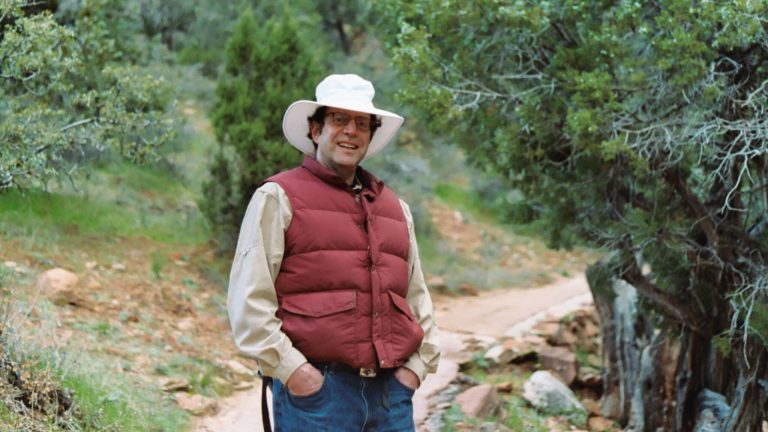Chair: Marlina Nasution, PhD (AskBio)
Co-Chair: Shuyen Ho, PhD (Consultant)
Abstract: This session is for remembering and honoring contributions made by Richard Simon – a visionary biostatistician whom his work “Simon Two-Stage design” made great impacts in early phases of clinical trials. He was a leader in the development and use of predictive biomarkers in therapeutic research, led Biometric Research Program and was a chief of the Computational & Systems Biology Branch at National Cancer Institute. The session aims to summarize his works and contributions and to highlight how these have inspired and influenced the cancer research and clinical trials in general. Dr. Noah Simon, Dr. Stephen George, Dr. Janet Wittes and Dr. Susan Ellenberg will share their interesting perspectives and insights.

Speaker: Noah Simon, PhD (Affiliate)
Title: Richard Simon; “Anything super complicated is probably @*||&#!~”
Abstract: My father had a keen sense for identifying critical biomedical problems that could be posed simply and mathematically. He always took a first principles approach to posing and solving problems (and understanding ideas): There needed to be a simple story both to the problem and solution. The mathematics needed to be clear and incisive — In roughly his words “anything super complicated is probably @*||&#!~”.
In addition, he had brilliant intuition — he had that rare talent of identifying clean solutions that are obvious in hindsight (but never in foresight).
My father was also notably genuine and unpretentious; both in his life (his usual outfit was jeans and a spandex T-shirt, both bought at discount), and in his science. He had a very “no frills” approach to research (sometimes to a fault: his “version control software” was a spiral notebook that he hand-wrote his code in).
In my talk, I will speak a bit to my experience learning statistics from my father, and our collaborative work (in clinical trial design and biomarker development). I will mention that time he scooped me on an idea by roughly 25 years; and I may even tell his favorite biostatistics joke.
Speaker: Stephen George, PhD (Affiliate)
Title: Richard Simon: An Appreciation
Abstract: I first met Richard Simon sometime in the early 1970s, when we were both starting our careers. We were born in the same year, received undergraduate degrees in the same year, doctoral degrees in the same year, and had just started our applied professional life involved in clinical cancer research. In a subsequent twenty-year period during which I served as the head of one of the NCI-sponsored cooperative clinical trials groups, we worked closely together in the collaborative arrangement framework between NCI and the groups. Considering the breath of Rich’s contributions, there is essentially no area in the methodology of clinical trials and related topics that has not been influenced substantially by his work. I will describe a few of these contributions briefly. It was my privilege to have known and worked closely with such an outstanding person and to have considered him both a friend and colleague.
Speaker: Janet Wittes, PhD (Affiliate)
Title: Rich Will Always Be With Us
Abstract: It’s hard to remember a time when I didn’t know Richard Simon, or at least know of him. The importance of the questions he addressed, the clarity of his writing, and his intellectual engagement in his work have influenced many of us, both statisticians and clinicians. In 1983 my husband Bob and I moved to Bethesda to join the NIH – he at the National Cancer Institute (NCI) and I had the National Heart, Lung, and Blood Institute (NHLBI). Bob, an oncologist, was concerned that the group he was about to lead lacked statisticians, so he was delighted when Rich and Susan Ellenberg were willing to join his program. During those NCI/NHLBI years, I was involved with Rich both indirectly through Bob and directly. Indirectly, Bob told me how delighted he was with the way in which Rich, Susan, and later others who joined the group, were so tightly integrated with the clinicians. Their contributions to the Program were critical to its success. And I, on the NHLBI side, used to invite Rich to join our weekly Branch seminars when we found ourselves grappling with a statistical issue for which we wanted someone from outside our group to provide thoughtful, practical advice. Later, when I left NHLBI and formed Statistics Collaborative, I relied on Rich again to come and help us think through statistical issues. For example, in one particularly notable session, he led us through a discussion of non-inferiority when the statistical community was first struggling with how to define a margin. Now that calling Rich for advice is no longer possible, when I face a statistical problem that straddles theory and practice, I find myself trying as best I can to imagine what Rich would say. I feel lucky to have been the beneficiary of his intellectual generosity and his keen insights. He was also great company at the theater.
Speaker: Susan Ellenberg, PhD (University of Pennsylavania)
Title: Richard Simon: Mentor, Collaborator, Friend
Abstract: As I was completing my doctoral work, I was advised to look for a supervisor who I could learn from. When I saw that Richard Simon was advertising a staff fellow position in his branch at the National Cancer Institute I immediately applied and was thrilled to be selected. I had long admired Rich’s papers, which provided elegant approaches to the design and analysis of cancer studies. During my time in Rich’s branch he encouraged me to pursue ideas about improving the efficiency of clinical trials, and together with Peter Thall, a visitor to the branch, we had a highly productive collaboration developing prototype adaptive designs for phase 2 and phase 3 cancer clinical trials. I could not have found a better person to work with at that early stage in my career; he gave me the confidence to consider new ideas and take initiatives to solve problems.
